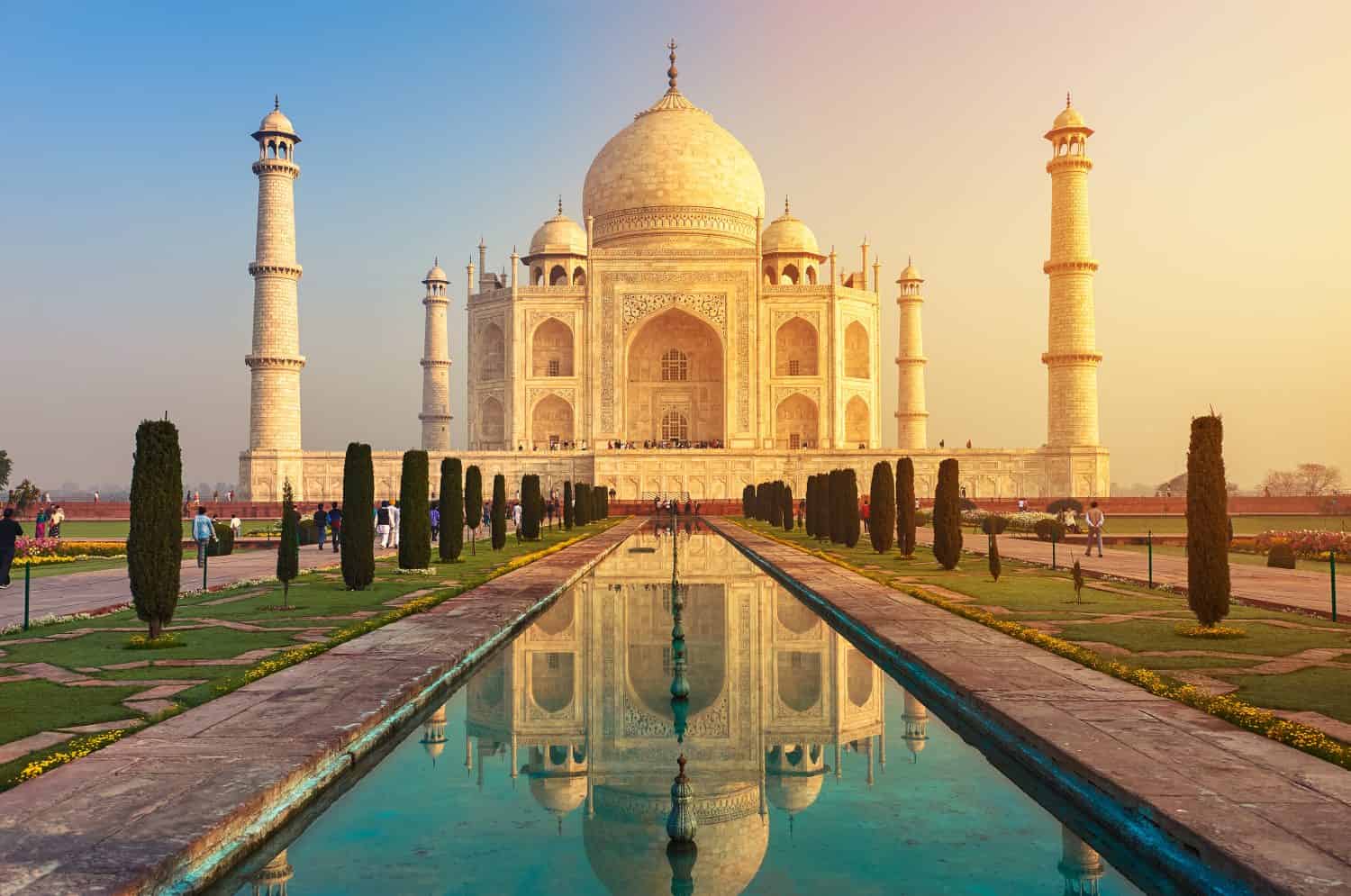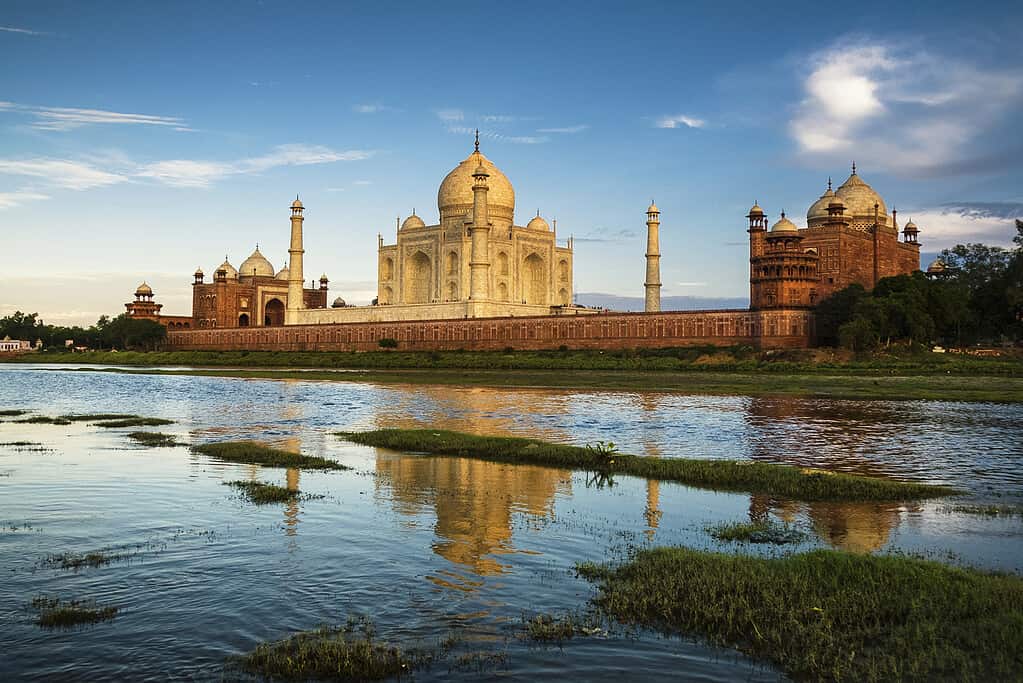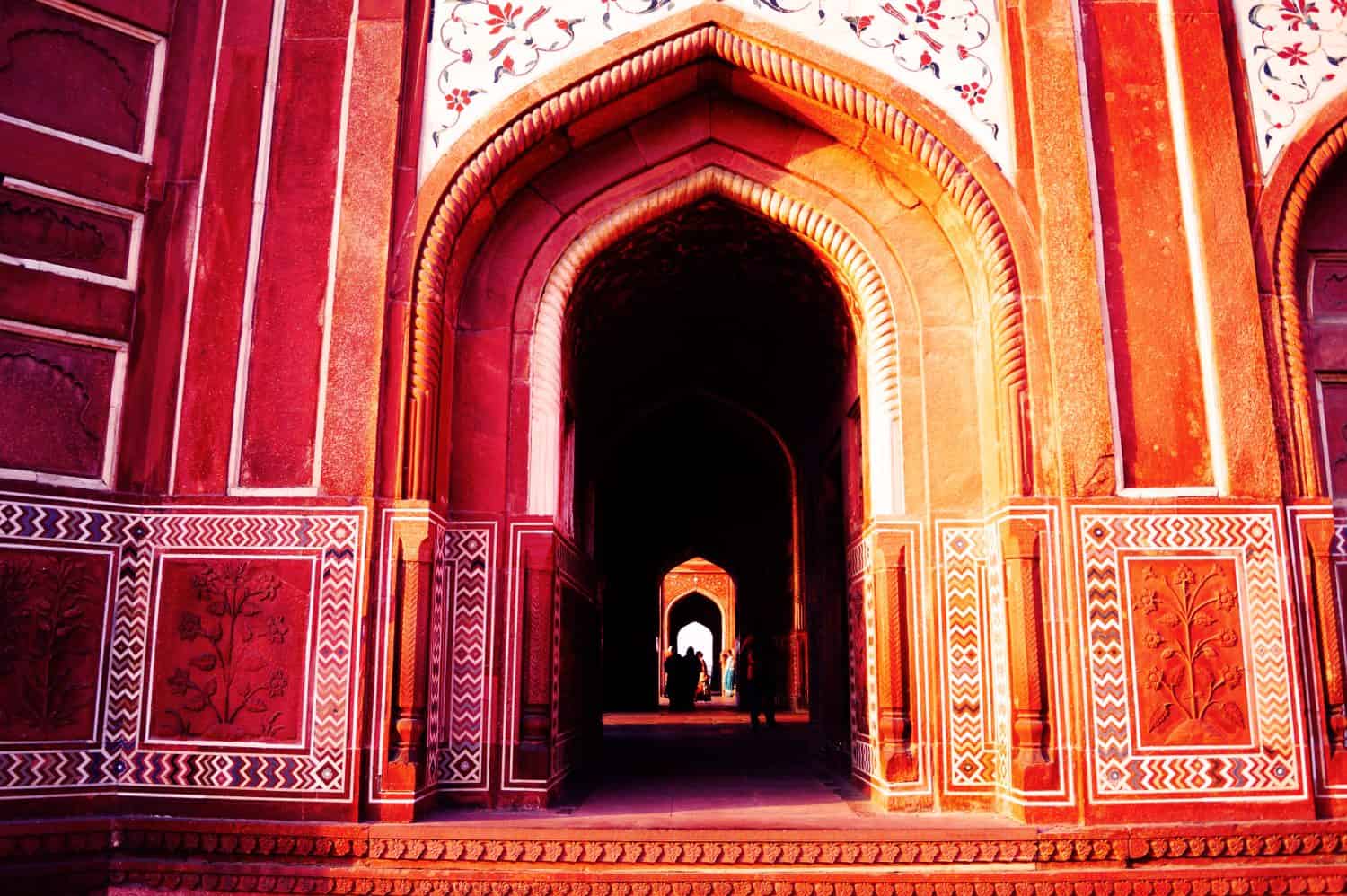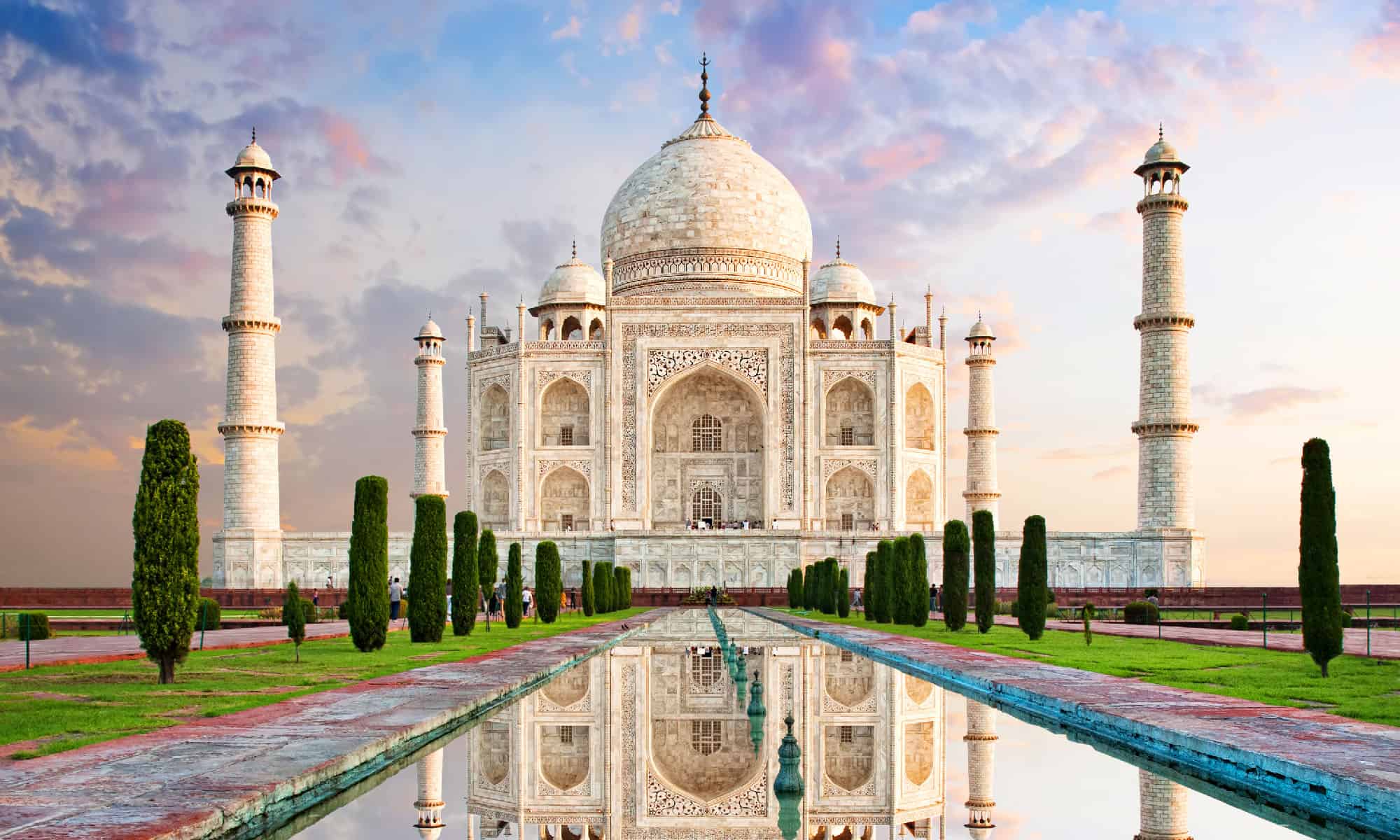Buildings have been built for kings and queens throughout history. Sometimes those same kings and queens want them built. They want a summer home here or a winter home there. There are a myriad of examples like that in every country throughout the world. For the Taj Mahal, it’s no different. This magnificent ivory-white building is a mausoleum that has been a popular tourist destination for a very long time.
People post selfies and take hordes of pictures. But do they know how and why the Taj Mahal was built? Most people don’t know the history behind its construction. Let’s explore how and why the Taj Mahal was built. We’ll also give you some information on the wildlife in the area and other fun facts.
Location of Taj Mahal

The entire complex took 21 years to build — from 1632 to 1653.
©YURY TARANIK/Shutterstock.com
The Taj Mahal is located in India. More specifically, the mausoleum sits on the right bank of the Yamuna River, in the city of Agra, Uttar Pradesh. The complex where the Taj Mahal is located is 42 acres and also contains a mosque, a guest house, and gardens. Inside the Taj Mahal are two tombs — of Shah Jahan and his wife Mumtaz Mahal, from whom the mausoleum was built.
Tourists from all over the world flock to the building from every direction. The most popular way to get there is by train or by bus from New Delhi, however, there are also flights from all over the country to Agra. From Agra, you can take a taxi or some other transit option to arrive at the complex.
History of the Taj Mahal

The construction of the Taj Mahal cost 3.2 crores of rupees, which is equivalent to $384,000.
©Roop_Dey/Shutterstock.com
In 1631, the fifth Mughal emperor, Shah Jahan, decided he wanted to build a beautiful mausoleum to honor his late, beloved wife, Mumtaz Mahal, who had died that year. Construction began in 1632 and did not finish until 1648. The other buildings and gardens were completed about five years later. The Taj Mahal is intricately adorned, and historians have pointed out that the Shah’s undying love shows in the magnificence of the building. The Shah chose the southern part of Agra because he was enamored by its beauty.
For the materials, over a thousand elephants were used to bring the marble and sandstone used to build the mausoleum. The materials were gathered from all over India and the surrounding countries. The Shah hired over 20,000 artisans to work on the project over the 16 years. The Taj Mahal was built with red sandstone and then covered with white marble. The outside is intricately designed with calligraphy. It incorporated Indo-Islamic and also Mughal architecture.
Inside the building, many precious jewels were used to design flowers on the walls. There is also a tomb built to house the remains of the Shah’s late wife. The Shah died in 1666 and his remains were interred in the same tomb. Today, fake remains are in the main building and the actual remains of both the Shah and his wife are at a lower level.
Wildlife in the Area

Several dignitaries and celebrities from all over the world have visited the Taj Mahal, including George Harrison, Jackie Kennedy, Princess Diana, Justin Trudeau, Jimmy Carter, and Queen Elizabeth II, among others.
©Inigo Arza Azcorra/iStock via Getty Images
Adjacent to the Taj Mahal is the Taj Protected Forest. The Taj Protected Forest is a wooded area where you can take walks with a view of the Taj Mahal. Many animals make their home in this wooded area and surrounding areas. You can spot several species of deer, like the spotted deer and the sambar deer. You can also see hyenas, jackals, and turtles. If you are lucky (or maybe not?), you can even see leopards and tigers roaming in the area. You can also go to the Sur Sarovar Bird Sanctuary to witness many types of birds, as well as the Agra Bear Rescue Facility, which has rehabilitated more than 600 sloth bears that used to be exploited.
Because of its proximity to Agra, which is one of the most polluted cities in the world, the Taj Mahal is getting damaged — turning green and yellow in some areas. The Yamuna River is one of the most polluted rivers in the world and as such, there’s a lot of sewage and other types of waste. But the building is not the only thing affected; the wildlife is also taking a hit.
Conclusion

Inside the Taj Mahal, there are many beautiful flowers made of many types of jewels on its walls. Unfortunately, many of those jewels were taken off its walls by the British Army during the 1857 Indian Mutiny.
©Pavel Laputskov/Shutterstock.com
And there you have it, that;’s how and why the Taj Mahal was built. The beautiful ivory-white mausoleum now houses the tombs of the Shah and his wife. You can visit the beautiful building and its gardens most days it’s open. The architectural masterpiece gets about 25,000 visitors every day and a whopping 8 million per year.
This makes the Taj Mahal one of India’s crowned jewels and the government takes care of it with the utmost delicacy. In 1983, the Taj Mahal was declared a UNESCO World Heritage Site. The building was also the winner of an initiative to name the new Seven Wonders of the World. That top-place finish is well-deserved as the Taj Mahal is one of the most beautiful buildings in the world (and even more beautiful with the story that goes behind it).
So, as you take the trek to the Taj Mahal, think about the person you love and what you would do for them. It probably won’t even come close to the Shah’s grand gesture.
Thank you for reading! Have some feedback for us? Contact the AZ Animals editorial team.








